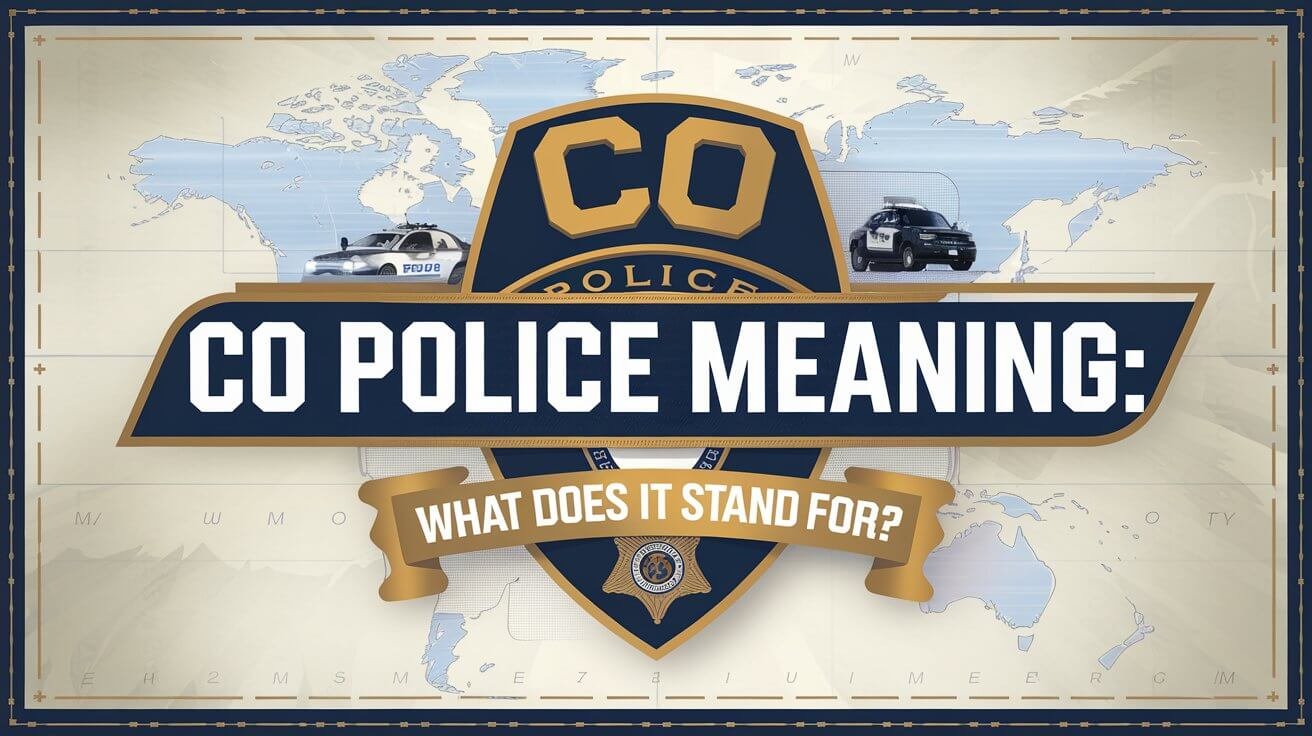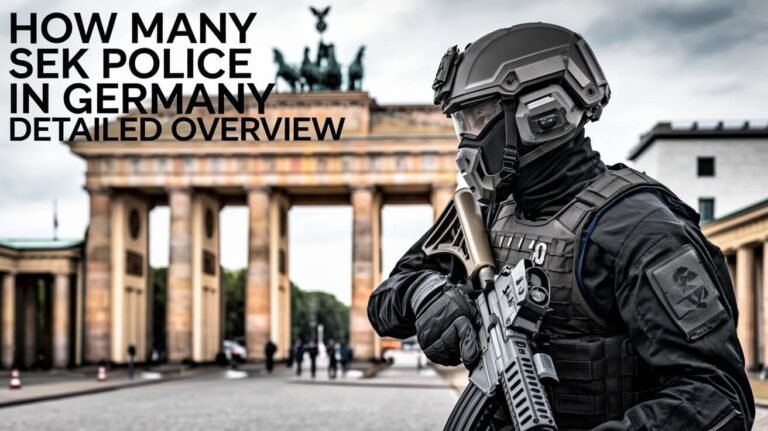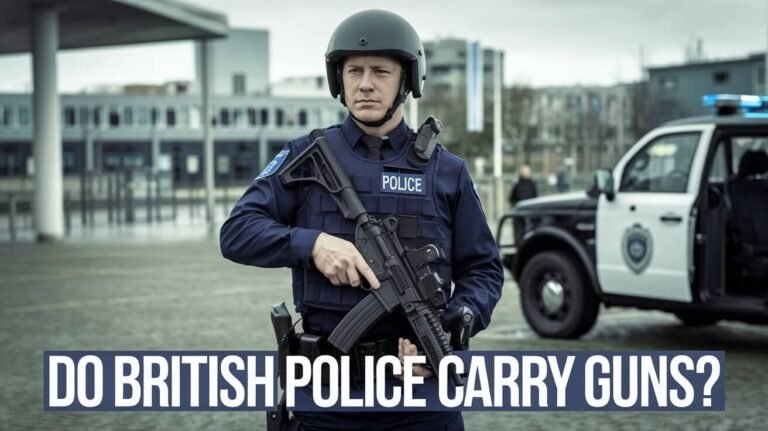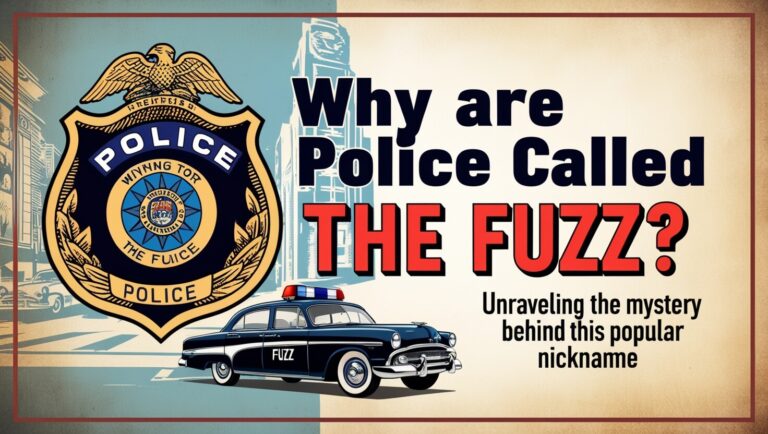Co Police Meaning: What Does It Stand For?

In the United States, “co police” means county police departments. They cover the whole county. These agencies handle everything from patrolling to investigations and specialized units.
In some places, county police might work with or replace sheriff’s offices. This depends on state and local laws.
County police are key to keeping communities safe. They work with other agencies to tackle big issues. This includes municipal police and state police.
Evolution of County Police Systems
The history of county police in the U.S. is fascinating. It started with colonial-era sheriffs. Now, it’s a modern, professional force. It looks different in every state and region.
Historical Development in the United States
The first police department was in New York City in 1844. It was officially set up in 1845. Soon, other cities like New Orleans and Chicago followed.
These early departments were inspired by London’s police. They were organized like a military. Their main job was to stop crime and keep order.
Crime kept happening, so detective units were created. New York City and Chicago got theirs in 1857 and 1861. But, corruption was a big problem. It led to changes in some places.
Modern County Police Structure
Now, there are over 18,000 police departments in the U.S. They have more than 420,000 officers. That’s about 2.2 officers for every 1,000 people.
These departments handle about 8.25 million crimes a year. They make over 10 million arrests every year.
Regional Variations and Authority
County police departments are different everywhere. Some have a sheriff’s office and a police department. Others have just one.
The laws and powers of these departments vary. So does how they work together. It all depends on what each community needs.
Co Police Meaning: Essential Terminology and Usage
It’s key to know the terms used in co police work. The co police acronym stands for county police departments. They cover specific areas and work with state and local police to keep everyone safe.
Police use codes like “187” for Murder in California and “5150” for being mentally unstable. They also use “BOLO” for Be on the Lookout. Other important terms include “ADW” for Assault with a Deadly Weapon, “CI” for Confidential Informant, and “OIS” for Officer Involved Shooting. Knowing these helps co police officers talk clearly and work well together.
Co police officers also need to understand what co police is and its role in law enforcement. The definition of co police includes their duties, power, and area of work. It changes in different places and states. Keeping up with these changes helps co police officers do their job and work with other police.
Types of County Police Departments in America
In the United States, county police departments are mainly three types: full-service, limited service, or restricted service units. Knowing the co police meaning and the different types of county law enforcement is key. It helps us understand the complex world of American policing.
Full-Service Police Departments
Full-service county police departments cover the whole county. They serve both unincorporated areas and towns without their own police. They handle everything from emergencies to traffic laws and keeping the peace.
Limited Service Departments
Limited service county police focus on unincorporated areas and special districts. They let cities and towns handle their own law enforcement. Their main tasks include rural patrols, park security, and overseeing county-owned facilities.
Restricted Service Units
Restricted service county police units focus on county-owned properties. This includes government buildings, parks, and other facilities. Their main job is to keep these areas safe and orderly.
Some counties mix these types of law enforcement or have merged departments under the county sheriff’s office. Knowing the define co police and what each department does is vital. It helps us navigate the complex world of American law enforcement.
Common Radio Codes and Communications
In the world of co police, radio codes are key for quick communication. The Association of Police Communications Officers (APCO) has helped create and update these codes. They started in 1937 with the APCO Ten Signals to make radio talk shorter.
Over time, these codes have grown and gotten better. The first set in 1939 had 17 signals. Today, you’ll hear “Code Three” for emergencies, “Code Seven” for breaks, and “Twenty” for locations.
- “Code Three” for emergency response with lights and sirens
- “Code Seven” for being out of service or on a break
- “Twenty” to indicate a subject’s location or home
Other important terms include “CP” for command post, “ETA” for estimated time of arrival, and “RTD” for return to duty. These help co police departments work together quickly in emergencies.
| Code | Meaning |
|---|---|
| 10-4 | Acknowledgment (OK) |
| 10-11 | Dog case |
| 10-30 | Unnecessary use of radio, danger, caution (vehicle accidents) |
| 10-50 | Accident (fire, personal injury, property damage) |
| 10-55 | Intoxicated driver/pedestrian, bomb threat, coroner’s case |
| 10-70 | Fire alarm, improperly parked vehicle, danger/caution, prowler |
| 10-90 | Bank alarm, possible hazard, needs attention |
| 10-98 | Assignment done, need firefighter help |
These abbreviations and terms are vital for quick and effective communication. They help law enforcement respond fast to emergencies.
County Police Jurisdictions and Authority
County police areas and powers come from state laws and local rules. The co police explanation and co police definition show how these laws shape county police work in the U.S.
Legal Framework
County police can arrest people, start investigations, and serve warrants. How much power they have depends on state laws and local rules. For instance, Florida has 67 counties, each with its own sheriff. Sheriffs enforce laws, serve warrants, and handle civil papers.
Enforcement Powers
Police enforce state laws and local rules in their area. But, city police can only work in their city. Sheriffs can work outside their area with agreements with other counties.
Interdepartmental Cooperation
- County police work with city police, state, and federal agencies to share resources and coordinate efforts.
- This co police acronym is key for effective law enforcement across different areas.
- They might team up for investigations, share information, and provide special equipment or help.
| Jurisdiction | Enforcement Powers | Interdepartmental Cooperation |
|---|---|---|
| County Police | Enforce state and county laws, serve warrants and civil papers | Collaborate with municipal police, state agencies, and federal law enforcement |
| Municipal Police | Enforce state criminal and traffic laws, local ordinances within their jurisdiction | Work with county police and state agencies through mutual aid agreements |
Standard Operating Procedures and Protocols
County police departments follow strict rules and guidelines. These help them work smoothly and follow the law. They make sure everyone does things the same way.
Important areas for understanding co police, co police meaning, and define co police include:
- Patrol operations: Rules for answering calls, stopping cars, and handling big situations.
- Investigations: Steps for finding evidence, talking to witnesses, and cleaning up crime scenes.
- Prisoner handling: Rules for booking, moving, and keeping arrested people safe.
- Use of force: Guidelines for when and how officers can use force.
County police also have special rules for things like officer shootings and internal investigations. These rules make sure things are done right and openly.
Keeping SOPs current is key for county police. They need to check and update these rules often. This keeps them in line with new laws and the best ways to do things. It makes the department better and more professional.
Equipment and Resources in County Policing
County police departments in the U.S. use many specialized tools and resources. These help them do their jobs well. They make sure what does co police stand for, co police abbreviation, and co police term officers can serve and protect better.
Vehicle and Technology Systems
Police cars have advanced technology like Mobile Digital Terminals (MDTs) or Mobile Computer Terminals (MCTs). These let officers check important info and do tasks from their cars. They get real-time data, maps, and can talk to others easily, making them quicker to respond.
Communication Devices
Good communication is key for county police. They use top-notch radios and body-worn cameras. These help them talk clearly with each other and the public. They make sure everyone knows what’s happening, making things more open and safe.
Specialized Equipment
County police have special gear for different jobs. They have K-9 units, SWAT gear, and tools like Automated Fingerprint Identification Systems (AFIS). Each department uses what they need based on their own challenges.
The variety of equipment and resources is vital for what does co police stand for, co police abbreviation, and co police term officers. It helps them handle many situations, from everyday patrols to big emergencies. This focus on safety and effectiveness is what makes county police so important.
County Police Administrative Structure
The county police administrative structure in the United States is like the military. It starts with the chief of police or sheriff at the top. They make sure the department runs smoothly.
Below them are assistant chiefs or undersheriffs. They handle specific areas of the department.
Captains, lieutenants, and sergeants lead the next level. Captains run certain divisions. Lieutenants help with administration and go to meetings. Sergeants train and check if officers follow rules.
At the bottom are the patrol officers. They are the most in the department. Some join SWAT teams, canine units, or bomb squads later. Police detectives solve crimes in their own areas.
This setup helps county police work well together. It makes sure they can protect the community effectively.
Collaboration with Other Law Enforcement Agencies
County police departments team up with federal, state, and local law enforcement to keep communities safe. Understanding these partnerships is key to grasping the co police meaning and the scope of co police acronym.
Federal Partnerships
At the federal level, county police work with the FBI, DEA, and ATF. These partnerships help share intelligence and resources. They tackle big crimes that cross county lines, ensuring understanding co police efforts are effective.
State-Level Coordination
County police also work closely with state agencies like the California Highway Patrol (CHP) or the Department of Public Safety (DPS). These partnerships help manage emergencies that affect more than one county.
Municipal Department Relations
At the local level, county police team up with city police through mutual aid agreements. They form joint task forces to share resources and skills. This boosts the co police meaning and effectiveness of law enforcement in the county.
In Conclusion
The county police system in the United States is key to keeping communities safe. It has a long history and works in many different places. Knowing about co police helps us support law enforcement better.
The term co police abbreviation refers to county police departments. They offer various services, from full law enforcement to specialized tasks. It’s important to understand their legal powers and how they work to ensure justice.
As society and technology change, co police must adapt. Working together with other law enforcement groups is vital. This way, co police can keep protecting our communities well.






